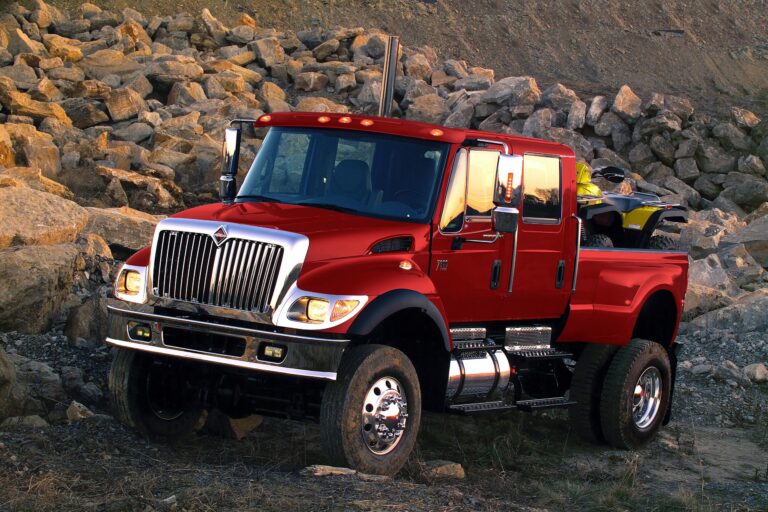Mattracks Price: A Comprehensive Guide to Investing in All-Terrain Capability
Mattracks Price: A Comprehensive Guide to Investing in All-Terrain Capability cars.truckstrend.com
In the world of off-road adventure, utility, and heavy-duty work, there are few upgrades as transformative as Mattracks. These innovative track conversion systems replace traditional wheels, granting vehicles unparalleled traction, flotation, and mobility across the most challenging terrains – from deep snow and thick mud to loose sand and rugged rocks. But as with any specialized, high-performance equipment, understanding Mattracks price is crucial. It’s not just a purchase; it’s an investment in extended capability, year-round utility, and often, the ability to accomplish tasks previously deemed impossible. This comprehensive guide will delve into the various facets of Mattracks pricing, helping you navigate the market and make an informed decision.
What Influences Mattracks Price? Deconstructing the Investment
Mattracks Price: A Comprehensive Guide to Investing in All-Terrain Capability
The price of a Mattracks system is not a one-size-fits-all figure. It’s influenced by a multitude of factors, each contributing to the overall cost and reflecting the complexity, capability, and engineering prowess of these remarkable systems. Understanding these variables is the first step in budgeting for your Mattracks purchase.
1. Vehicle Compatibility and Application
Perhaps the most significant factor is the type of vehicle you intend to equip. Mattracks offers systems for a vast array of vehicles, and the price scales with the vehicle’s size, weight, and power output.
- ATVs (All-Terrain Vehicles): Typically the most affordable entry point, designed for lighter loads and recreational use.
- UTVs (Utility Terrain Vehicles): A popular segment with a wide range of models, from recreational to heavy-duty workhorses. Prices vary significantly based on the UTV’s size and intended use.
- Trucks (Light to Heavy-Duty): Systems for trucks are substantially more expensive due to the increased engineering required for heavier loads, higher speeds, and greater torque.
- Tractors and Specialty Equipment: These are at the top end of the price spectrum, designed for agricultural, industrial, or extreme-duty applications, demanding robust construction and specialized mounting.

2. Mattracks Model and Series
Mattracks produces several distinct series, each engineered for specific performance characteristics and vehicle types. Generally, the more heavy-duty, complex, or specialized the series, the higher the price.
- M3/Litefoot Series: Entry-level, often for smaller ATVs and UTVs.
- XT/XTR/XTS Series: Mid-range, designed for a broader array of UTVs and some light trucks, offering enhanced performance and durability.
- HD Series: Heavy-duty, built for larger UTVs, trucks, and commercial applications, featuring reinforced components.
- Specialty/Track-Tor Series: Custom-engineered systems for tractors, large industrial equipment, and extreme commercial use, representing the premium price tier.

3. Track Material, Design, and Components

The quality and design of the tracks themselves play a crucial role.
- Rubber Compound: High-quality, durable rubber compounds designed to withstand extreme temperatures, abrasion, and punctures are costly to produce.
- Track Width and Length: Wider and longer tracks offer more flotation and traction but require more material and complex manufacturing, increasing cost.
- Internal Components: The internal drive system, bogie wheels, suspension, and bearing assemblies are precision-engineered components that contribute significantly to the system’s longevity and performance. Higher-end models feature more robust, heavy-duty components.
4. New vs. Used Mattracks
Like any substantial investment, the decision between new and used equipment can significantly impact the price.
- New Systems: Offer the latest technology, full warranty, and the assurance of pristine condition. They command premium pricing.
- Used Systems: Can provide substantial savings but come with inherent risks. Condition, prior usage, and the availability of parts or warranty support are critical considerations.
5. Additional Costs and Accessories
Beyond the core track system, several other factors can add to the total investment.
- Mounting Kits: While often included in the base price, specific vehicle mounting kits can sometimes be an extra cost or vary in price.
- Installation: Professional installation adds labor costs, while DIY installation requires time, tools, and mechanical aptitude.
- Anti-Rotation Kits/Gear Reduction: For certain vehicles or extreme applications, these accessories might be necessary for optimal performance and can add to the total.
- Shipping: Mattracks are heavy and bulky, so shipping costs, especially for larger systems, can be substantial.
- Taxes and Duties: Applicable sales taxes or import duties will add to the final price.
Mattracks Series and Their Estimated Price Ranges
To give you a clearer picture, here’s an estimated breakdown of Mattracks prices by series. Please note that these are general estimates and actual prices will vary based on dealer, specific model configurations, promotions, and geographical location.
| Mattracks Series/Model Example | Vehicle Type | Typical Application | Estimated Price Range (USD) |
|---|---|---|---|
| Mattracks M3 Series | Small ATVs, Smaller UTVs | Light snow, mud, recreational riding | $4,000 – $7,000 |
| Mattracks XT/XTR Series | Mid-size UTVs, Larger ATVs | General off-road, deep snow, moderate mud, hunting | $8,000 – $13,000 |
| Mattracks XTS Series | Larger UTVs, Crossover SXS | Demanding off-road, heavy snow, deep mud, utility | $12,000 – $18,000 |
| Mattracks HD Series | Light-Duty Trucks, Heavy UTVs | Commercial, industrial, severe conditions, rescue | $20,000 – $35,000+ |
| Mattracks 400/800 Series | Mid-size Trucks, Vans | Commercial, municipal, heavy-duty utility | $40,000 – $65,000+ |
| Mattracks 1000/1500 Series | Heavy-Duty Trucks, Tractors | Extreme commercial, agriculture, specialized work | $70,000 – $150,000+ |
| Track-Tor Series | Agricultural Tractors | Farming, forestry, land management | $50,000 – $100,000+ |
Note: Prices are estimates and subject to change based on market conditions, specific vehicle fitment, and optional accessories. Always request a direct quote from an authorized Mattracks dealer for accurate pricing.
The Benefits: Justifying the Mattracks Investment
While the price tag for Mattracks might seem substantial, the benefits they provide often far outweigh the initial outlay, especially for those whose livelihoods or passions depend on unparalleled off-road capability.
- Unmatched Traction and Mobility: This is the core advantage. Mattracks provide a massive contact patch, distributing vehicle weight over a larger area, resulting in superior grip on virtually any surface where wheels would fail.
- Increased Vehicle Versatility: A vehicle equipped with Mattracks transforms from a seasonal machine into a year-round workhorse or adventure vehicle, capable of tackling snow, mud, sand, swamps, and rocky terrain with ease.
- Extended Accessibility: Gain access to remote locations for hunting, fishing, surveying, rescue operations, utility maintenance, or property management that are otherwise impassable.
- Reduced Ground Pressure: The large footprint significantly reduces ground pressure, minimizing impact on fragile environments, turf, or cultivated land, making them ideal for environmentally sensitive areas or agricultural use.
- Enhanced Safety and Stability: The wide, stable stance of tracks improves stability on uneven terrain, reducing the risk of rollovers compared to wheeled vehicles in challenging conditions.
- Durability and Longevity: Mattracks are built to last. Constructed from high-quality materials and engineered for demanding use, they represent a long-term investment that, with proper maintenance, will serve reliably for years.
- Potential for Resale Value: Well-maintained Mattracks systems tend to hold their value relatively well in the used market due to their specialized nature and high demand.
How to Get the Best Value for Your Mattracks Investment
Making a smart purchase means more than just finding the lowest price; it means ensuring you get the right system for your needs at a fair cost.
-
Thoroughly Assess Your Needs: Before looking at prices, define your primary application.
- What type of vehicle do you have?
- What kind of terrain will you primarily traverse?
- How often will you use the tracks?
- What are your load requirements?
- Over-buying (e.g., an HD system for light recreational use) or under-buying (e.g., an M3 for heavy commercial work) can lead to dissatisfaction or costly replacements down the line.
-
Research Specific Models and Compatibility: Mattracks offers a configurator on their website. Use it to determine which series and models are compatible with your exact vehicle make, model, and year. This ensures proper fitment and performance.
-
Consider Used Mattracks Carefully: If budget is a major concern, used systems can offer significant savings. However, proceed with caution:
- Inspect Thoroughly: Check track condition (cracks, tears), bogie wheels (wear, play), bearings, and frame for damage or excessive wear.
- Verify Compatibility: Ensure the used system comes with the correct mounting kit for your vehicle, or factor in the cost of a new one.
- Ask for Service Records: Understand its history and maintenance.
- Factor in Potential Repairs: Even a good deal can become expensive if major components need replacing.
-
Shop Around and Get Multiple Quotes: Contact several authorized Mattracks dealers. Prices can vary due to dealer-specific promotions, shipping costs, or installation services. Don’t be afraid to negotiate.
-
Look for Off-Season Deals or Promotions: Sometimes, dealers or manufacturers offer discounts during the off-season (e.g., summer for snow tracks, or winter for all-terrain tracks if demand is lower).
-
Factor in Installation Costs (DIY vs. Professional): While technically installable by a mechanically inclined individual, Mattracks installation can be complex and time-consuming. Professional installation ensures correct fitment and optimal performance but adds to the cost. Weigh your skills and available time against the professional fee.
-
Budget for Maintenance and Storage: Like any vehicle component, Mattracks require routine maintenance (e.g., track tension adjustments, bearing checks, cleaning). Also, consider where you will store them when not in use, as they are bulky.
Challenges and Considerations Beyond Price
Beyond the sticker price, there are practical considerations that come with owning Mattracks:
- Reduced Top Speed: Tracks are not designed for high speeds. Your vehicle’s top speed will be significantly reduced (often by 50% or more), and sustained high speeds can cause excessive wear.
- Increased Fuel Consumption: The increased rolling resistance of tracks typically leads to higher fuel consumption compared to wheels.
- Installation and Removal Time: While relatively straightforward once you’ve done it a few times, swapping between wheels and tracks takes time and effort, usually an hour or more.
- Storage: Mattracks are large and heavy. You’ll need adequate space for storage when they are not on your vehicle.
- Pavement Use: Extended use on hard surfaces like pavement is not recommended as it causes accelerated wear on the tracks and can negatively impact handling.
- Vehicle Modifications: Depending on your vehicle and the specific Mattracks model, you might need suspension modifications (e.g., lift kits) to accommodate the tracks.
Conclusion: A Transformative Investment in Capability
The price of Mattracks reflects their advanced engineering, robust construction, and the unparalleled capability they unlock for your vehicle. From a few thousand dollars for a basic ATV system to well over $100,000 for heavy-duty commercial applications, the investment is significant. However, for those who require year-round access, superior traction in extreme conditions, or the ability to perform tasks previously thought impossible, Mattracks represent a transformative upgrade.
By thoroughly understanding the factors influencing price, carefully assessing your specific needs, exploring all your options (new vs. used, different series), and budgeting for associated costs, you can make an informed decision that ensures you get the best value. Ultimately, investing in Mattracks is investing in freedom, versatility, and the confidence to conquer any terrain, making your vehicle truly unstoppable.
Frequently Asked Questions (FAQ) About Mattracks Price
Q1: Are Mattracks universal, or do I need a specific model for my vehicle?
No, Mattracks are not universal. Each system requires a specific vehicle mounting kit designed for your make, model, and year. While the core track units might be similar across some series, the adapters connecting them to your vehicle’s hubs are unique. Always verify compatibility before purchasing.
Q2: How long do Mattracks typically last?
The lifespan of Mattracks depends heavily on usage, terrain, maintenance, and the specific model. With proper care and regular maintenance, many owners report getting several thousand hours of use from their systems. Components like bogie wheels and rubber tracks are wear items and will eventually need replacement.
Q3: Do Mattracks require a lot of maintenance?
Mattracks require routine maintenance to ensure longevity and optimal performance. This includes checking track tension, inspecting bogie wheels and bearings for wear, cleaning debris from the system, and lubricating moving parts as recommended by the manufacturer. Following the maintenance schedule will extend their lifespan significantly.
Q4: Can I install Mattracks myself, or do I need professional installation?
Yes, it is possible to install Mattracks yourself if you have mechanical aptitude, the right tools (including a floor jack and jack stands), and follow the detailed instructions provided by Mattracks. However, it can be a time-consuming and physically demanding process. Professional installation ensures correct fitment and can be worthwhile for peace of mind, especially for larger systems.
Q5: Do Mattracks affect my vehicle’s warranty?
Adding aftermarket accessories can sometimes affect a vehicle’s warranty, particularly if the modification is deemed to have caused a failure. It’s advisable to check with your vehicle’s manufacturer or dealership regarding their policy on track systems before installation.
Q6: Is buying used Mattracks a good way to save money?
Buying used Mattracks can offer significant cost savings, but it comes with risks. Thoroughly inspect the system for wear and damage, verify its compatibility with your vehicle, and understand its history. Factor in potential repair costs if components are worn. If you’re not comfortable with a detailed inspection, consider having a mechanic or an experienced Mattracks owner inspect them for you.
Q7: Can I drive my Mattracks-equipped vehicle on pavement?
While technically possible for short distances, it is generally not recommended to drive Mattracks on hard surfaces like pavement for extended periods. This can cause accelerated wear to the rubber tracks and potentially damage the underlying surface. Mattracks are designed for off-road, soft, or extreme terrain use.






